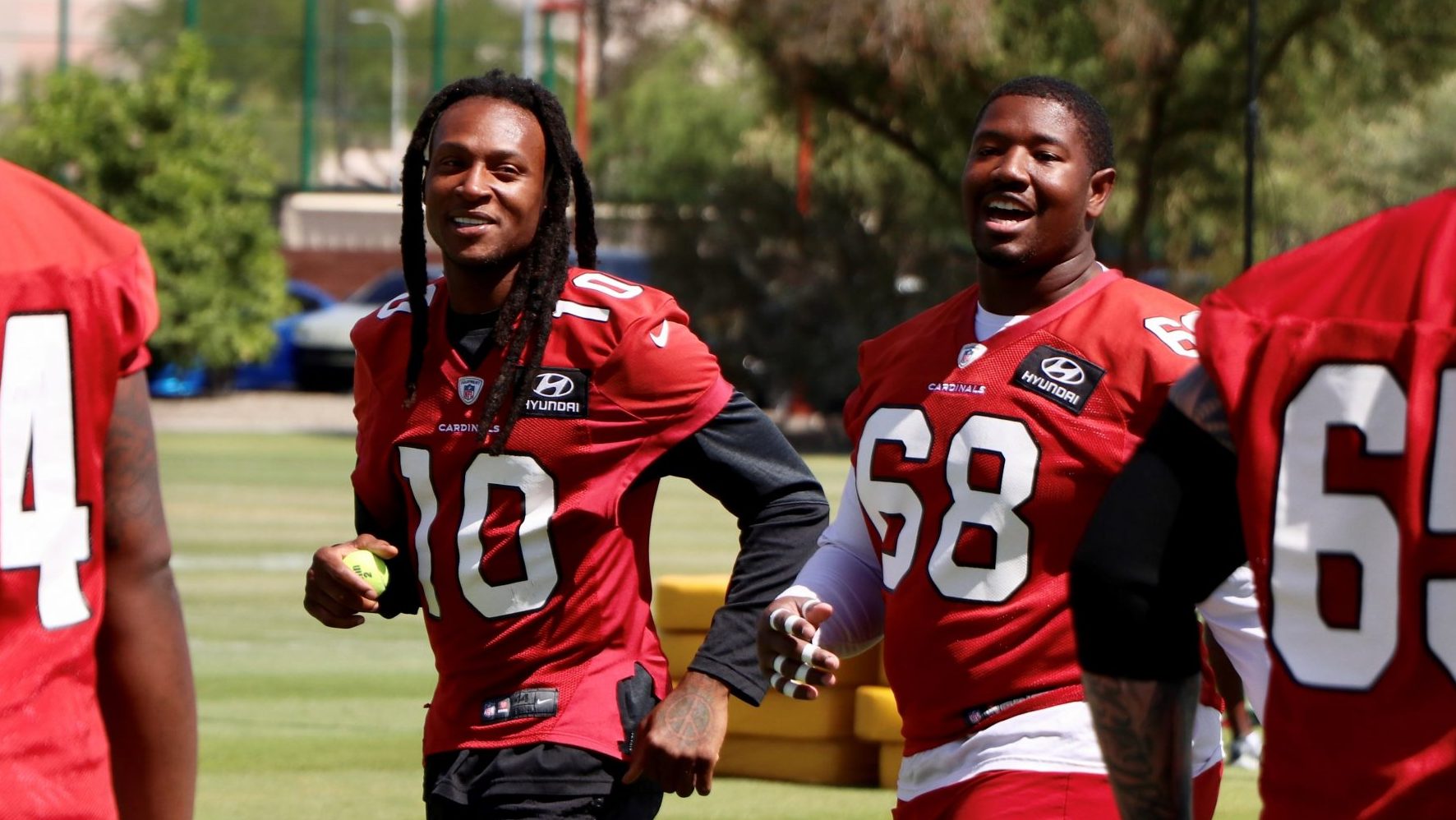By the numbers: Cardinals’ offensive stumbles without DeAndre Hopkins
May 3, 2022, 9:30 AM

DeAndre Hopkins #10 of the Arizona Cardinals runs with the ball while being tackled by Desmond King II #25 of the Houston Texans in the second quarter in the game at State Farm Stadium on October 24, 2021 in Glendale, Arizona. (Photo by Christian Petersen/Getty Images)
(Photo by Christian Petersen/Getty Images)
Life without wide receiver DeAndre Hopkins became difficult for the Arizona Cardinals at the end of the 2021 season.
Arizona went 1-4, including the playoffs, after the three-time All-Pro first teamer went down with a knee injury that required surgery.
The Cardinals will have to adjust their offense without him again for the start of the 2022 campaign, as Hopkins was suspended Monday for the first six games due to violating the league’s performance-enhancing drug policy.
Hopkins withdrew his appeal. He later posted a statement saying he was confused and shocked by the development and intends to get to the bottom of it.
See you Week 7. pic.twitter.com/rHTofEx7jK
— Deandre Hopkins (@DeAndreHopkins) May 3, 2022
The Cardinals don’t have the same offensive arsenal as last season with incomers wide receiver Marquise Brown, tight end Trey McBride and running back Keaontay Ingram. Wide receiver Christian Kirk and running back Chase Edmonds, meanwhile are out the door.
10.45
The Cardinals put up 30.2 points per game when Hopkins played last season, propelled by a blazing start in which they scored 31 or more points in each of the first four weeks.
Without him, their average dropped 10.45 points to 19.75.
Their offense with him was on pace to being second in the league in scoring just behind the Dallas Cowboys at 31.2. Their 19.75 points would have bested only 11 offenses in the league.
Head coach Kliff Kingsbury has admitted many times that he did not adjust well when Hopkins went down. He has the summer and more depth entering the season to figure out a better plan.
25.74
Kyler Murray was an MVP candidate with Hopkins out wide for eight games to start the 2021 season. They both missed Weeks 9-11 with injuries before returning after the bye week in Week 13. Murray played the rest of the season while Hopkins’ year ended after Week 14.
Murray’s quarterback rating with Hopkins available was 106 last year, on pace for third-best in the NFL behind Aaron Rodgers of the Green Bay Packers and Joe Burrow of the Cincinnati Bengals.
That number dropped to 80.26 in the final five games without Hopkins.
There are levels to this, and clearly receivers were not finding the same separation without the attention Hopkins warranted.
Still, it shows just how much a top receiver can help open the offense for a quarterback.
68%
The Cardinals essentially stopped running out four-receiver groupings after Week 14. They ran 10-personnel 17% of the time during the first 14 weeks and just 2% afterward, according to Sharp Football Stats.
They ran significantly more 11-personnel at 68%, a jump from a 52% usage in Weeks 1-14, while running approximately the same out of 12-personnel packages.
This is where roster changes could affect how they run it during Hopkins’ suspension.
They have a much deeper tight ends corps with McBride, while Maxx Williams is working his way back from a knee injury. They give Arizona options to go heavy. Plus, Kingsbury said McBride can play the Y, and thus there are more options to go back to four-receivers sets.
20
Wide receiver A.J. Green made a productive WR No. 2 opposite of Hopkins last year.
Green, who re-signed on a one-year deal this offseason, caught 37 passes on 54 targets with three scores in the 10 games Hopkins played.
He grabbed only 17 of 38 targets without the All-Pro and did not have a catch in Arizona’s playoff loss to the Rams in Los Angeles.










